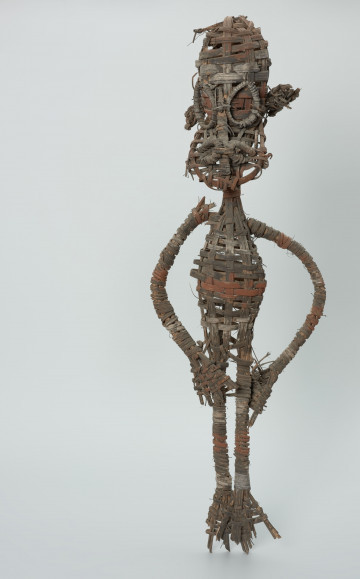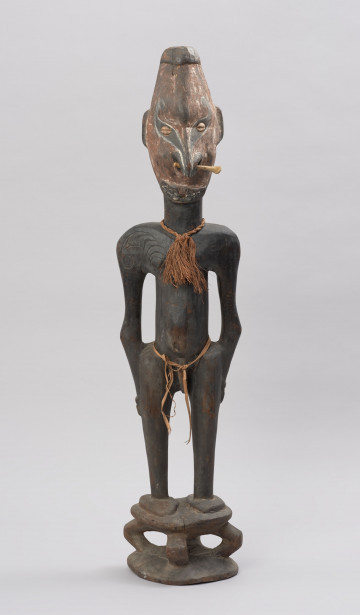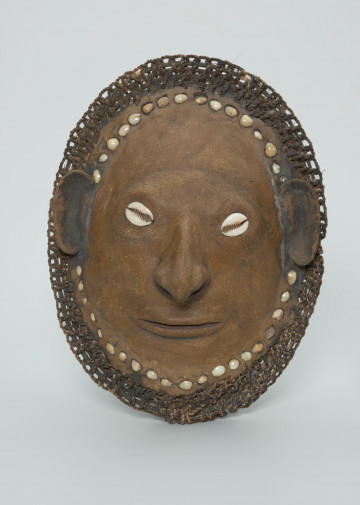
Doll representing ancestor
1951 — 1995
National Museum in Szczecin
Part of the collection: Art of Papua New Guinea
In Papuan beliefs, an important role is attributed to ancestors, who are held in high esteem and reverence. The cult of ancestors originates from the belief that the dead do not go to another world. They remain on earth and continue to be part of their community, to which they provide knowledge and support. According to Papuans, death releases the power that accumulates in the head during life. These beliefs gave rise to the cult of skulls, which, among other things, were hung on worship hooks in the Houses of the Spirits, New Guinea's temples. The heads were the property of the entire community, and the power released from them was supposed to ensure prosperity and success for the entire village. The colonial and missionary authorities led to the abolition of the New Guinea skull cult, so the cult hooks also changed their purpose. In residential houses, bilum bags with everyday items and food were hung to protect them from rats, dogs and children. Domestic hooks could be privately owned, while those hung in Spirit Houses belonged to the whole community. The object on display was made in the Central Sepik in Papua New Guinea. This area encompasses the Sepik River basin, from the village of Ambunti to the mouth of the Yuat River. Anthropomorphic representations predominate among the carved cult objects of the Middle Sepik. Sculptures of ancestors from this region usually have an elongated body, a flat face, a straight nose and a narrow mouth. The hook in question consists of a carving of an ancestor (most probably female) and an anchor-like abutment with a carved head in the lower part. The contours of the face are marked with rows of contrasting dots, which symbolise the eyes of the mythical ancestors. That means that the object could have been a powerful magical object. It may also be evidenced by the head placed in the lower part of the hook. Cult objects are endowed with a powerful force called mana. They should not be touched, or even be in the presence of, uninitiated people, including women and children. They are only made by initiated men, the guardians of the cult, who can master their power. It was believed that the hook was the 'dwelling place' of an ancestor whose task it was to protect a particular home and village.
Katarzyna Findlik-Gawron
Author / creator
Dimensions
cały obiekt: height: 105,4 cm, width: 19 cm
Object type
sculpture
Creation time / dating
Creation / finding place
Identification number
Location / status

1951 — 1995
National Museum in Szczecin

1951 — 2000
National Museum in Szczecin

około 1980 — 1985
National Museum in Szczecin
DISCOVER this TOPIC
National Museum in Lublin
DISCOVER this PATH
Educational path